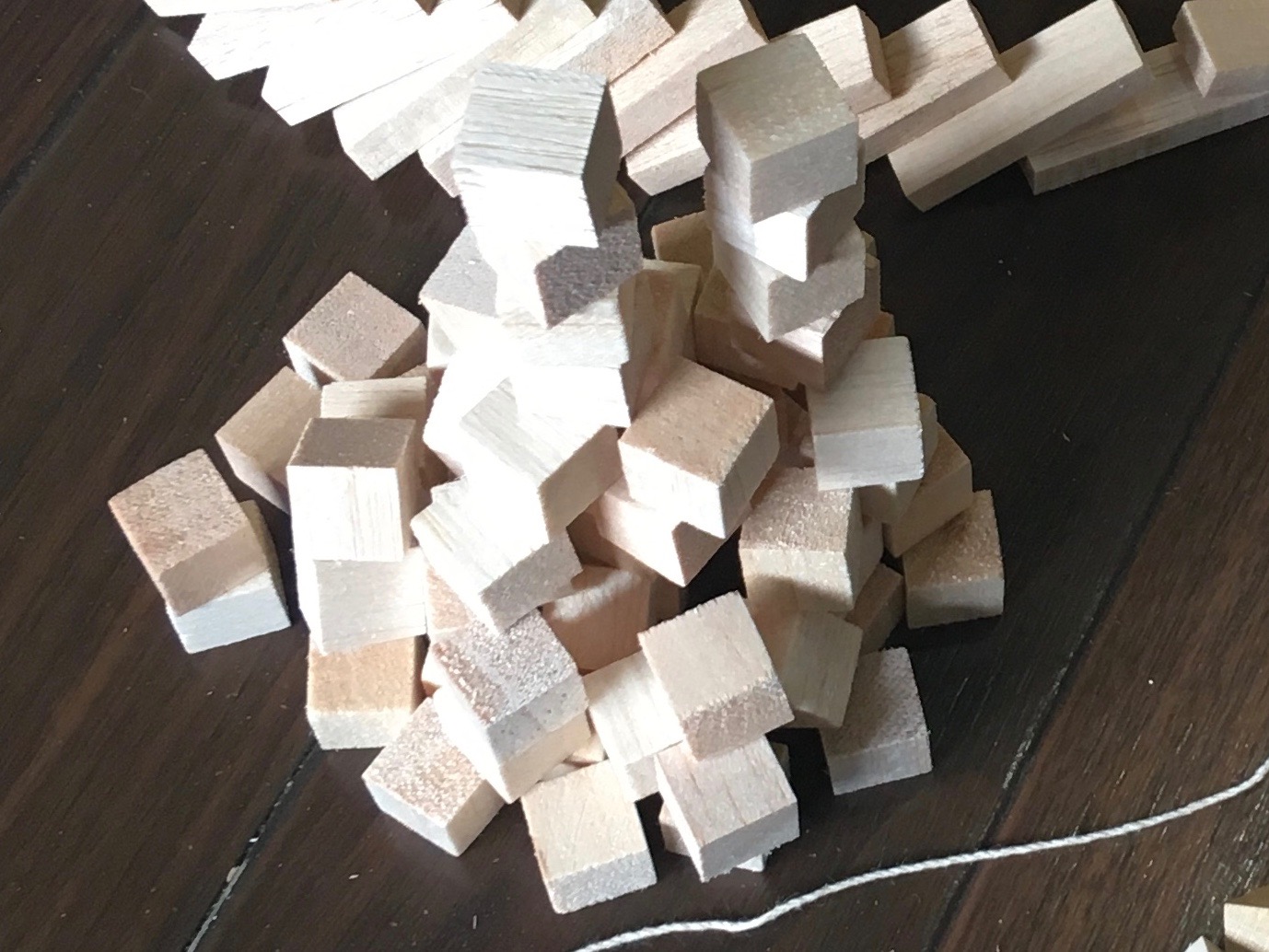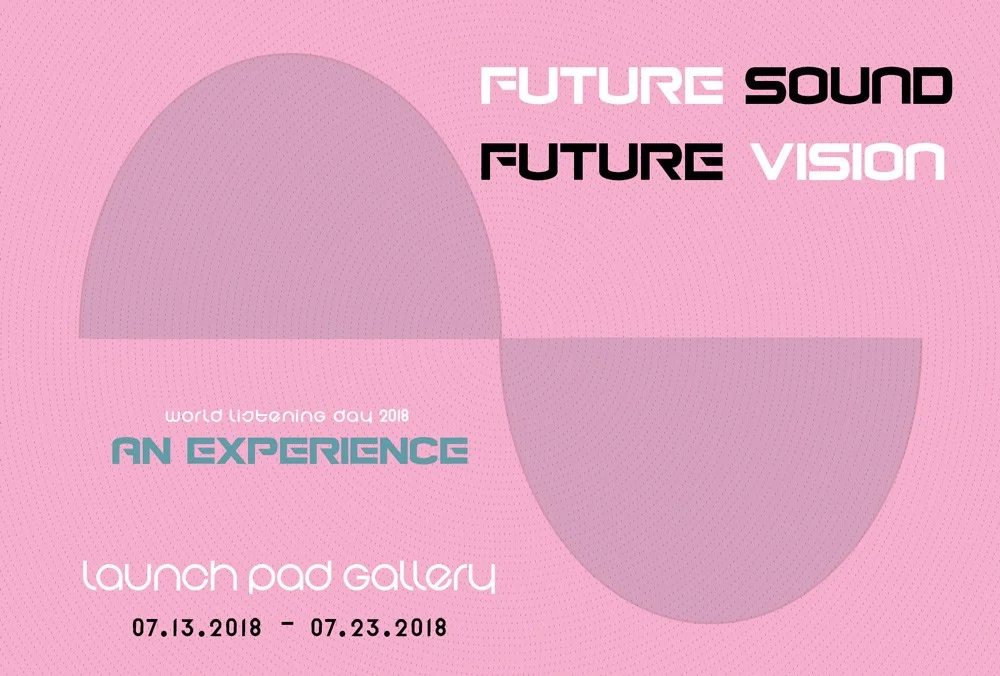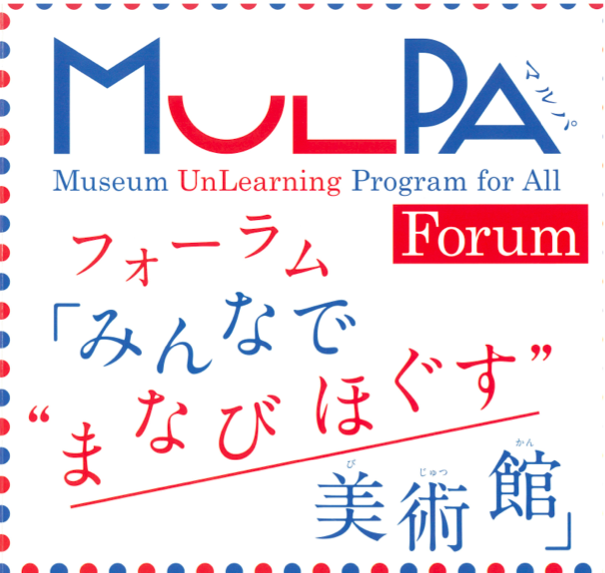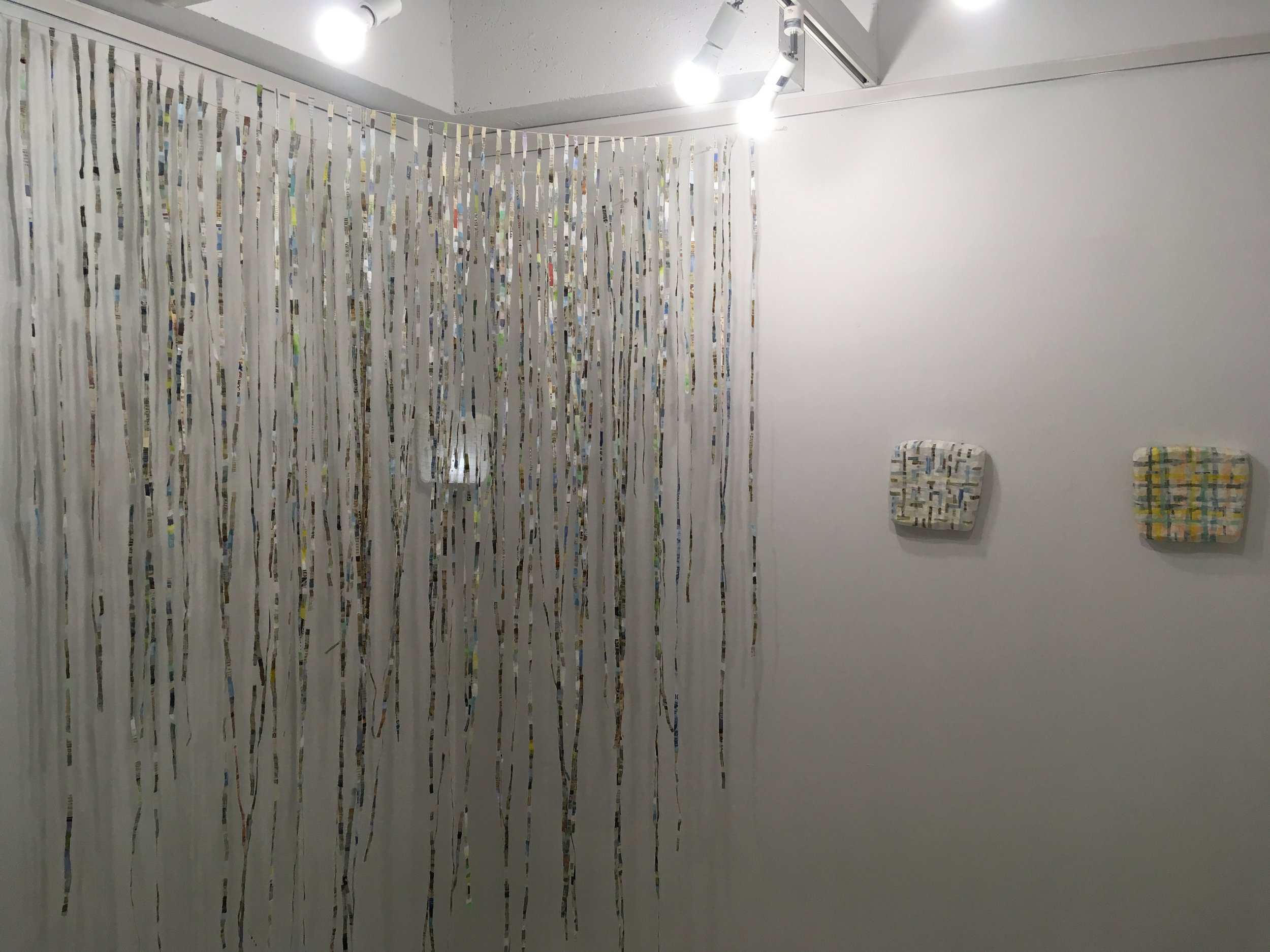Upon arriving at Launch Pad Gallery in the sweltering heat on Marine Day, I had no preconceived ideas about what I was going to do. I walked into the space and saw that the works had proliferated even more in the gallery space with all the walls filled with works as well as the floor and objects hanging from the ceiling.
I went over to my works from the first two days and took in what I had made as I cooled down from the walk from the station. I ultimately decided to scrap the collage I made with paper remnants and the double sided tape holder. From there, I grabbed the two bags of materials that I brought and stored at the gallery and my eyes were drawn to the roll of cotton muslin which I had originally bought to try and cover the walls of Sawatari Gallery last year. I began cutting the muslin into curved forms similar to what I did with the paper on Saturday and started drawing directly onto them with my Daily Drawings vocabulary. The marker pens were wider and the muslin offered a challenging surface to draw on so the marks were looser and larger. I then took these muslin forms and started wrapping the large paper form with them. I tried to respond anew with each form to the last form and the large paper form. After four or five forms, I ventured into my bag and pulled out the paper samples which I got for the Takeo Paper Show at Spiral Hall earlier this summer. I had been using these as supplemental materials for my Remnants of Memory collages, but seemed to be at a wit's end with them. I began cutting the different paper materials and colors into long linear forms which I then wrapped around the large paper form. In the early going, the color paper wrapped into the form started to look like a bad rendition of the Tokyo subway/train system which I quickly remedied with some colors which are not normally part of my palette. After a couple hours of working while talking with visitors and other artists, I ended up with this form.
Marcos Fernandes organized a Sound Walk event for Monday at 3 pm, but the sweltering heat and sun led to a delay in the start of the event in hopes of clouds and slightly cooler weather. With the extra time, I decided to return to the wooden blocks and paper. I started to pile blocks in various configurations and attaching them together with wood glue. I then took the forms and attached them to a piece of paper. At first, it resembled an abstract architectural model which I quickly moved away from by creating a circular form in three-dimensions. I also added tendrils of wood blocks extending from the circular form before starting to draw on the wood blocks and paper. I did not get too far along before the start of the workshop.
Marcos gave a wonderful and easy to understand explanation about phonography as well as the various recording devices, microphones, data forms and applications used in phonography. For me, the binaural and contact microphone quickly went up onto my wishlist. One of the great things I learned was the ability to use my digital IC recorder to make field recordings AND simultaneously listen to the recording through earphones.
From there we prepared for our sound walk and Marcos gave me a chance to try out the binaural microphone which he attached to a pair of crossed chopsticks and we set off around the neighborhood to see what we could discover. The ability to listen to the recording simultaneously provided an all together different experience of walking around the streets that I had been traversing this past long weekend. My ear buds blocked out most of the ambient background noise while the narrow diameter of the binaural microphones allowed me to pick up very specific noises in the environment. I was particularly intrigued by the ability of the microphone to pick up high pitched sounds of birds or wind chimes in the distance. I also used the binaural microphone to make field recordings of everyday activities like buying a bottle of water from the vending machine. I also placed the microphone in the narrow gaps between buildings to use the structures as echo chambers to see if I could pick up unusual sounds. If I thought I looked conspicuous taking photographs of Interstices, making field recordings was even more conspicuous. As a group, we elicited various puzzled glances as we searched high and low for nature and man-made sounds.
After returning to the gallery about half an hour later, we learned about some simple ways of manipulating the sound walk files with the Audacity program and listening to portions of each other's sound walk files. With the start of the work week upon me, I packed up all my materials and headed out in the evening haze back home. As I tried to stay cool on the train ride home, I thought about all the different ways that participating in this exhibition has created new possibilities. I am particularly excited about taking this experience forward as I prepare for my field research presentation for the MULPA project with the Chigasaki City Art Museum.



































